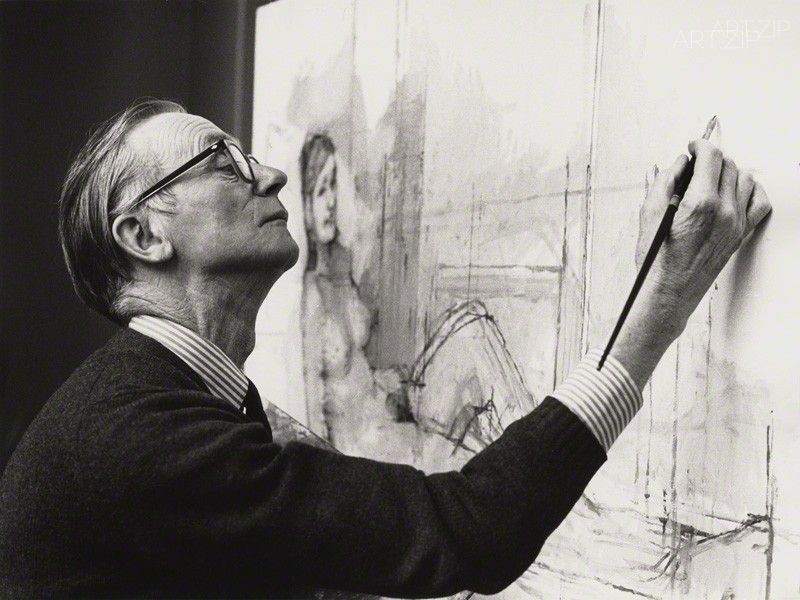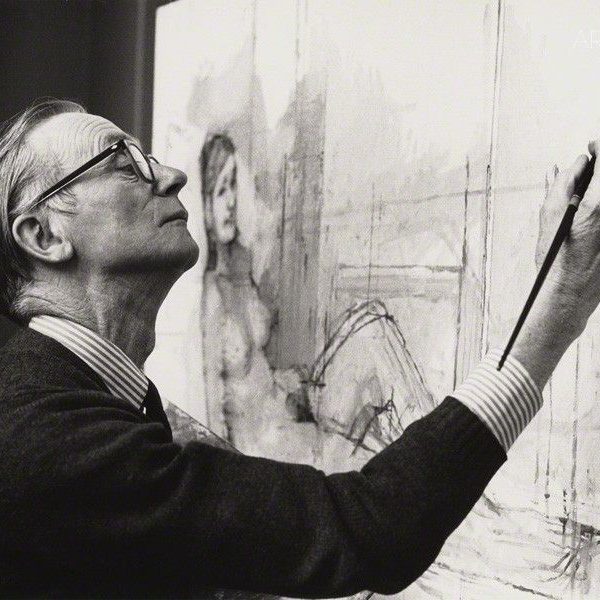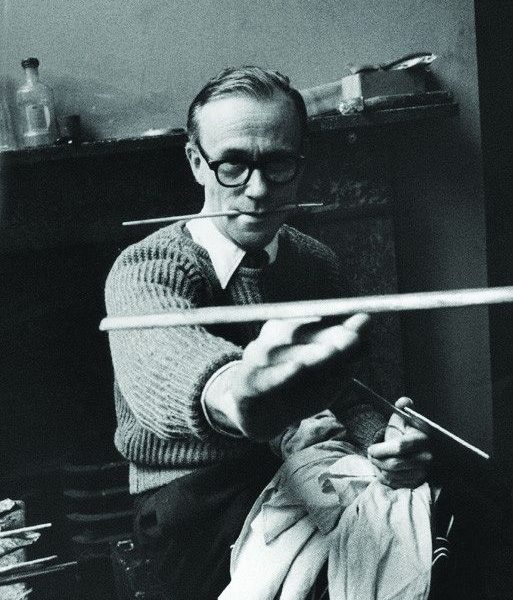
An Introduction to Foundation courses in British Art Education
一個關於英國藝術教育基礎課程的簡要介紹
“All of this proceeds from a point where Marx reminds us that the ultimate foundation remains living experience, living production…”
(Jacques Derrida and Bernard Stiegler, Spectrographies)
Text by: Yiou Peng
撰文:彭憶歐
“藝術教育學校(Art School Educated)”是一個泰特現代美術館研究部持續了五年的研究項目。此項研究專注於探究英國藝術院校從1960年到2000年期間課程設置的發展和教學體制的變化。在“藝術教育學校”的研究即將在今年二月畫上句號的同時,當代藝術研究院(ICA-Institute of Contemporary Arts)將舉辦一個題為“為何當今的藝術學校如此不同,如此誘人?”的學術會議來討論英國“自我組建、實驗和非正統”的教育模式。與此同時,來嘗試“質疑”藝術和設計兩門學科所涉及的教育內容。英國本土對於討論藝術教育的重視其並不是出人意料之外的。特別是在倫敦,這個被譽為是設計、時裝、藝術和文化創意產業的的天堂般的“遊樂場”。於是,這個“為何當今的藝術學校如此不同,如此誘人”的命題也逐漸被越來越多抱有其藝術夢想而遠道英國求學的國際學生們所質疑并認同。然而,到底是什麼元素使得英國的藝術教育體制如此不同并具吸引力呢? “基礎課程(Foundation Course)”的設立是不容忽視的,特別是其對於中等教育、高等教育,以及藝術實踐這三者之間的銜接和轉換所具有的強大的、首屈一指的影響。
According to UCAS (The Universities and Colleges Admissions Service), the foundation course is designed to transit students from their secondary education into higher education – combining academic study with practical work which eventually focuses on a specific discipline. It is considered good preparation to allow students to experience a wide range of subjects, equipping them with relevant skills in different practice fields. For example, before the students make their final decision regarding the specific subject they are going to pursue at university, the foundation course allows students to experiment with different media including painting, drawing, and photography. The length of the foundation course varies from one year to two depending on the specific programme which is usually provided by either a secondary school or a university.
根據英國高等院校入學申請機構(UCAS-The Universities and Colleges Admissions Service)的定義,“基礎課程”通過對於某一領域的理論學習和實踐學習兩個層面來幫助學生實現從中等教育到高等教育的過渡以及轉換。教育工作者們認為基礎課程對於學生們來講是一個非常必要並且有效的學習過程,因為這樣的課程允許學生們在一個廣泛定義的領域內,盡可能地嘗試不同學科的學習來獲取一些基本的技能和知識。例如對於希望學習藝術和設計的學生們來講,相對應的基礎課程會讓他們去嘗試不同的藝術媒介包括油畫、素描、攝影等等,從而讓學生們發現更多自己的興趣所在。這樣的經歷和知識可以有效地幫助學生選擇自己在大學想要學習的某一項更加具體的藝術學科。基礎課程的長短為一年到兩年不等,取決于具體的學校和學校學科的要求。
The origin of the foundation course dates back to the late 1950s. William Coldstream, Herbert Read and Harry Thubron are considered the ‘fathers’ of the foundation course. As an artist himself, Coldstream had a life long interest in art education. He taught at Camberwell School of Art from 1945 to 1949, and then later became the principal, and professor of Fine Art at the Slade School of Fine Art, University College London, where he had the most impact, striving to make the school a stage for artistic excellence. Coldstream’s influence was not only reflected in his teaching at the Slade but also through his innovative ideas for art education. He served as chairman on the National Advisory Council for Art Education in 1958, and contributed revolutionary solutions to the development of the British art education system. For example, the Coldstream Report published in 1960, outlines the requirements for a new Diploma in Art and Design (Dip.A.D.). This led to the establishment of the foundation course in art institutes, followed by three years of studio practice and complimentary studies, leading to a Dip.A.D.
基礎課程的歷史要追溯到二十世紀五十年代末。威廉·寇德斯吉姆(William Coldstream),荷爾博特·雷德(Herbert Read)和哈里·特博倫(Harry Thubron)被認為是基礎課程之父。寇德斯吉姆不僅僅是一位偉大的戰地藝術家,他對於基礎課程的設立以及英國藝術教育的啓蒙與發展有著深遠的影響。從1945年到1949年,寇德斯吉姆曾任教於坎伯威爾藝術學院(Camberwell School of Art),之後他成為了倫敦大學學院斯萊德藝術學院(Slade School of Fine Art, University College London)的教授和校長。在斯萊德藝術學院任教期間,寇德斯吉姆對於戰後斯萊德藝術學院在英國藝術教育界的崛起作出了眾多決定性的決策。寇德斯吉姆的影響並不僅僅拘泥於教學,他對於藝術教育本身的思考也是超前並且深遠的。1958年,在他擔任國家藝術教育顧問(National Advisory Council for Art Education)主席一職期間,由他撰寫并于1960年發表的“寇德斯吉姆報告”總結歸納了藝術設計學位的入學條件。由此對於藝術設計學位的確立變成了基礎課程誕生的直接原因--Dip.A.D.(Diploma in Art and Design)= 基礎課程+三年藝術理論及實踐。
.
William Coldstream’s colleagues Herbert Read and Harry Thubron went on to develop the foundation course system in more detail. The aim for the foundation course was to teach the students, what were considered to be, the basic skills that underpin all art disciplines, including design and architecture. Influenced by the German Bauhaus School of Art, Read reflected how, ‘this resulted in projects designed to develop techniques in using colour, articulating two and three-dimensional space, defining form and experimenting with diverse materials.’ One original feature of the foundation course method was that it did not teach any specific technique of art or design practice. A student with the aim to pursue further study in painting, for example, would not learn the basic techniques related to painting but instead core ideas and skills that are perceived to be common to all art practices.
寇德斯吉姆的學術同仁荷爾博特·雷德和哈里·特博倫在細節上把基礎課程進行了更加詳細的設計。最初設定基礎課程的目標是教授學生那些被認為在所有藝術領域(包括設計和建築)可運用以及探究的基本技能。受到德國包豪斯藝術學派(Bauhaus)的影響,雷德認為基礎課程應該培養學生對於顏色的運用技能,以及精確地運用平面以及立體來確定其作品形式。除此之外,還應該讓學生嘗試運用多樣的素材來進行藝術創造。基礎課程教學方法最原始的特點是它不會教授學生任何具體學科將會學到的技能。倘若一個學生決定在大學期間學習油畫,基礎課程並不會教授這個學生任何與油畫相關的藝術技巧,而會培養他可以運用在所有藝術學科領域的最基本的思維方式和藝術技能。
.
However, such a generalist foundation course model seems to have been abandoned as the foundation course has been become more and more subject specific over the years. Art institutes have started expecting and demanding that their applicants have an increasing amount of knowledge that is specifically related to the art practice they aim to pursue in the future. Therefore foundation courses nowadays have gradually become ‘subject-specific preparation courses’. The following possibilities might be identical to the formation of the contemporary foundation course:
• Fine art: drawing, painting, photography, printmaking, sculpture, textiles.
• Visual communications: advertising, animation, film and TV, forensic photography, graphics, and illustration.
• Design: ceramic, fashion, furniture, glass, interior, jewellery, knitwear, costume, theatre.
然而,由於基礎課程變得越來越具體化和學科化,如今人們已經拋棄了這樣廣泛式的基礎課程模式。隨著藝術院校錄取門檻的提高,他們期望自己未來的學生在入學前就能夠掌握一些與其想要進修的專業的相關技能與知識。於是當今的基礎課程變成了為某一具體學科所開設的機械化的預備課程。以下是一些比較典型的基礎課程項目:
• 藝術:素描、油畫、攝影、版畫、雕塑、紡織
• 視覺傳播:廣告、動畫、電影電視、法醫攝影、圖像設計、插畫
• 設計:陶藝、服裝、傢俱、玻璃、室內、珠寶、針織、戲裝、銀器、戲劇
.
Education critics and workers believe that the foundation course system is a great way to help art students develop their future interests before making a final decision on their major. Moreover, foundation courses are not only subject to art and design but other disciplines as well. According to a report from the Guardian newspaper in 2012, UCAS lists 2,922 different foundation courses in England, Wales and Northern Ireland. Though art and design are the most common subject areas, studied by more than 20% of foundation students starting in 2008-2009, the report indicates, ‘some 65% of full-time students were still studying six months after gaining their foundation degree, and 47% were working.’ Thus foundation courses nowadays not only prepare students for an academic future but can also be seen as a practical pre-career training. In ‘Foundation degrees offer a strong vision for the future’, an article published in the Guardian in 2012, Susan Young argues, ‘Foundation degrees are excellent for people who want to get practical knowledge of their chosen industry.’ ‘Staff are industry professionals and bring that world in with them, and conversations always lead to how it is in the outside world’, says Jeb Haward, head of Higher Education in the arts at SCC. This idea is agreed by the education consultant Maggie Greenwood who suggests, ‘[On a foundation degree] the student learns their way around the industry and can see if they like it first. You could be sitting alongside someone who has been in industry for five or six years. If you just do a degree you may not have that depth of experience.’
藝術評論家和藝術工作者們相信基礎課程體系在幫助學生決定他們未來的興趣和專業方面是非常有效的。而如今基礎課程的設立不僅只是在藝術和設計領域。2012年《衛報(The Guardian)》的一篇報告統計,在英格蘭、威爾士和北愛爾蘭地區UCAS列出了2922個不同的基礎課程項目。其中從2008年到2009年開始,有超過20%的學生學習與藝術和設計相關的基礎課程。此項報告還明確指出65%的學生在完成基礎課程的學習以後選擇繼續學習,47%的學生選擇并有能力進行實踐工作。因此基礎課程如今不僅僅只是幫助學生們完成從中等教育到高等教育的過渡,它同樣也有效地輔助學生從課堂走入社會。蘇珊·揚格(Susan Young)在2012年發表于《衛報》上的文章《基礎課程著眼于未來(Foundation degrees offer a strong vision for the future)》中寫到,“基礎課程是那些計劃在相應產業進行發展和深造的人們的最佳選擇。‘很多在基礎課程任教的老師們同時也在相應的領域工作,所以他們自身的實踐經驗可以幫助學生們更好地了解他們即將接觸的工作環境,傑布·哈維德(Jeb Haward)說。” 教育顧問麥琪·格林伍德(Maggie Greenwood)也贊同這樣的觀點。她說,“基礎課程讓學生們在做決定之前提前感受他們將會面臨的挑戰和環境。你身邊的同學可能已經有五、六年的工作經驗,與他們一起進行實踐學習與討論是一般學位課程無法給予的經驗。”
.
Over the years, as art education has evolved in the UK, the foundation course has transformed itself into a more pragmatic pedagogical model and moved away from its original generalist concept. However, it is difficult to say whether such skill-concentrated practice is comprehensive enough to produce future artists, which echoes the current concern surrounding the desire of students to learn ‘how to draw’,rather than,‘how to think’.
隨著藝術教育的發展,基礎課程從它最開始所推崇的“廣泛式”理念轉變為了一個更加實用型的教育體系。然而,由於基礎課程本身偏重于技能的特點,其是否有足夠全面而廣泛的能力來決定未來藝術家的發展還很難下定論,同時也反映了當今學生迫切想要學習“如何畫畫”勝於“如何思考”的擔憂。





